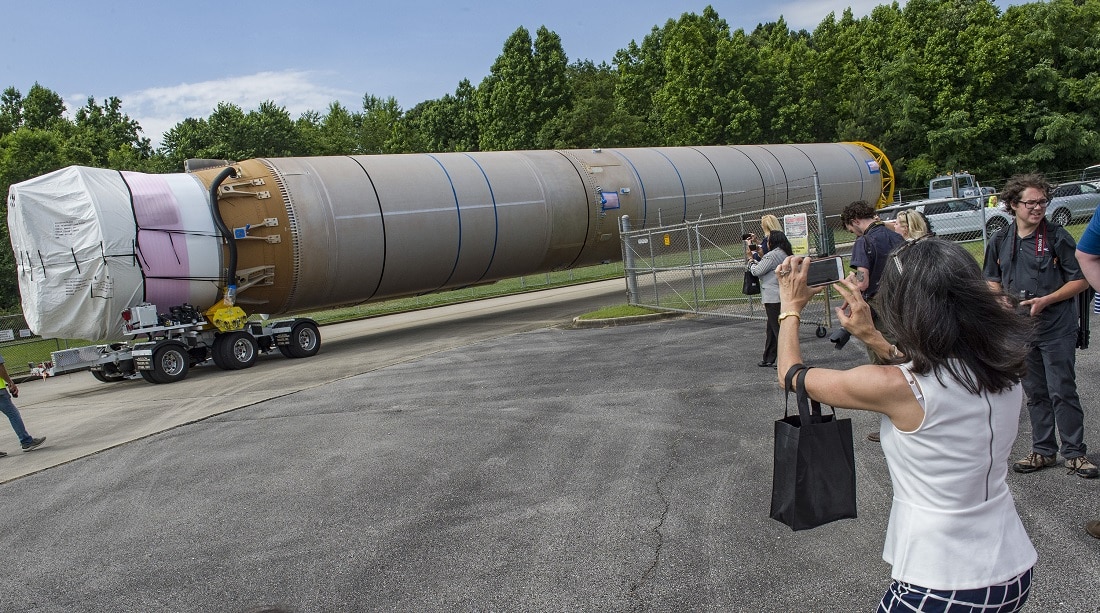Atlas V rocket departs Alabama factory for historic crewed mission

A potentially history-making Atlas V rocket leaves United Launch Alliance's Decatur property on its way to Cape Canaveral. The rocket will be used to restore the United States' capability to launch humans into space, which was lost when the Space Shuttle program ended in 2011. (contributed)
An Atlas V rocket that’s poised to make history emerged from the United Launch Alliance manufacturing facility in Alabama late last week and began a trek aboard a unique cargo ship to the legendary launch pad at Cape Canaveral.
This Atlas V’s mission targets a significant milestone –- restoring the nation’s human launch capability.
It’s set to launch Boeing’s CST-100 Starliner on the Crew Flight Test mission to the International Space Station in what could be the first time an American-made rocket has carried U.S. astronauts to the orbiting laboratory since the retirement of the Space Shuttle in 2011.
Last week, the Atlas V booster stage and Dual Engine Centaur upper stage were moved down the road from ULA’s Decatur factory for loading into the Mariner cargo vessel docked nearby, NASA said.
The 312-foot-long ship is purpose-built to navigate both shallow waters of rivers and ocean travel to reach ULA’s launch sites. It has been making the trek from Decatur to Cape Canaveral since 2001.

Once at Cape Canaveral Air Force Station in Florida, the United Launch Alliance Atlas V rocket will begin integrated operations and processing for the Crew Flight Test mission. (Emmett Given/NASA)
Restored capabilities
Once at Cape Canaveral Air Force Station in Florida, the Atlas V will begin integrated operations and processing for launch.
The rocket, known as AV-082, will launch the Starliner and its crew of NASA astronauts Mike Fincke and Nicole Mann, and Boeing astronaut Chris Ferguson, to the station, following the spacecraft’s maiden voyage of Starliner, the uncrewed Orbital Flight Test targeted for August.
This is the rocket that will carry humans back to space from American soil. History in the making. #Starliner #AboutDarnTime pic.twitter.com/sUrNvwhoY1
— Tory Bruno (@torybruno) May 23, 2019
NASA said regular commercial transportation using Boeing’s Starliner and SpaceX’s Crew Dragon spacecraft to and from the space station will enable the addition of another crew member, expanded station use and additional research time aboard the orbiting laboratory.
These flights will also help address the challenges of moving astronauts toward the Moon and Mars, the space agency said.
This story originally appeared on the Alabama Department of Commerce’s Made in Alabama website.





